How to care for lupine
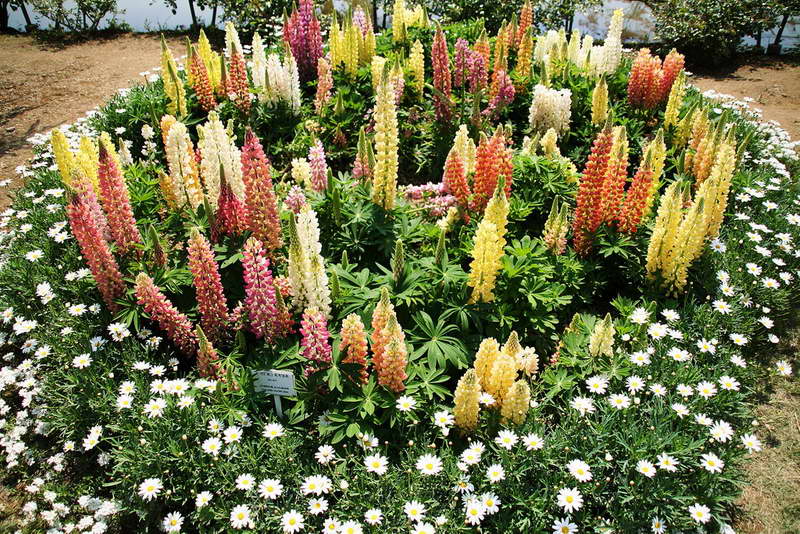
Lupine in landscape design photo
There is nothing difficult in this. So, for the cultivation of perennial lupine for the first year, you need to take special care of the plant, removing weeds in time and loosening the soil. After a while, the bushes will become strong and themselves will drown out the weeds. Sometimes hilling is carried out so that the root collar is not exposed and the lateral shoots are not isolated.
When 5-6 years have passed, old bushes are removed, since their middle part dies off by this time, which dramatically affects the quality of flowering. If you are growing tall varieties of lupines, put supports to them to prevent deformation of the stems from the wind. To maximize the flowering of the plant, constantly remove the faded flowers before they dry. If you do this, you can achieve double flowering of lupins. Watering is done in moderation, and in the spring - plentiful in order to accelerate the growth of the stems.
Reproduction
This culture can be propagated in two ways - by seeds and cuttings. Let's consider each in more detail.
Seed
After the beans are ripe, they crack, and the wind blows the seeds around. To obtain seedlings, the soil is first prepared and fertilized. The seeds are able to remain viable for 5 years. They should not be buried too deeply, but you can moisten them simply by covering them with a damp cloth. The first shoots appear after 2 weeks. Transplantation to a permanent place is necessary no later than 4-5 leaves appear on the seedling.
The seeds can also be germinated outdoors. The distance between them should be between 30 and 50 centimeters.

Vegetative
Only plants that have reached 3 years of age can be propagated by cuttings. Lupins, which are 5-6 years old, do not have lateral buds, so grafting in this case is more difficult to carry out. To do this, you will need to cut off the buds in the base area with a sharp knife, grabbing the root collar, and plant them in the shade, on sandy soil. After a month, the cutting with a developed root system can be transplanted to a permanent place.
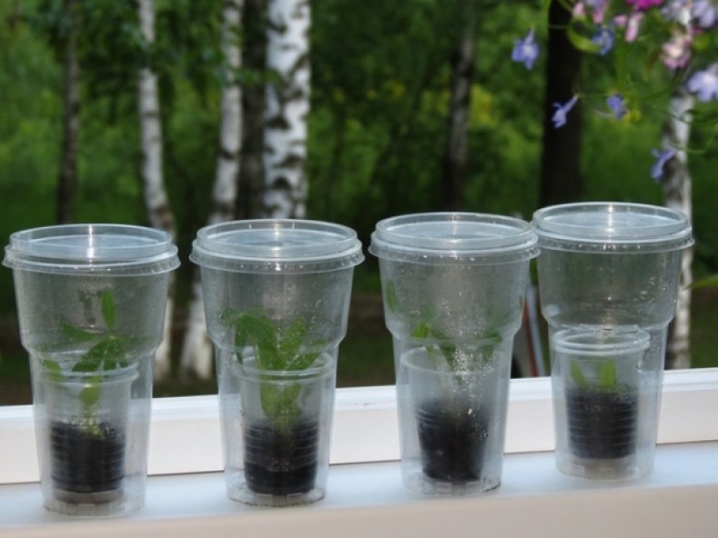
How and when to plant lupins with seeds
Growing lupine from seeds is the easiest way to propagate a plant. In stores you can buy varieties and hybrids of various colors, which will allow you to "paint" the garden with the most variegated colors.
When to sow lupine outdoors

When to sow lupine How to plant lupine seeds Photo of seedlings in the garden
Lupine is a perennial resistant to freezing, the seeds of which will sprout, even if sown in the fall before winter. It reproduces well by self-sowing, however, if it is not a hybrid (the seeds will sprout, but the plants will not look like "parents"). Given the properties of lupine seeds to germinate in any conditions, sowing can be done very early, as soon as the land is ripe. It may even be late March or early April, right up to the end of May.
The seeds are large and very easy to plant. Usually, even in the ground, lupines are planted on seedlings: the plants sprout quickly, but develop for 1.5-2 months until they can be transplanted. It is advisable to organize a greenhouse altogether: put arcs and cover with a film. Then the lupine sown in March will delight you with flowering in the same year.
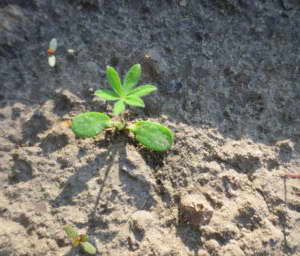
Lupins growing from seeds when to plant What do lupine shoots look like
How to plant lupine seeds in the ground:
- Embedding depth 1-2 cm.
- Distance in a row 8-10 cm.
- The distance between the rows is 10-12 cm.
When shoots appear, they are freed from weeds, the soil is slightly loosened. Watering is needed in moderation, after 2-3 days. When the plants reach 8-10 cm in height, they can be carefully transplanted, trying not to disturb the root system. Lupine tolerates transplanting well, is quickly taken and actively begins to build up green mass, the main thing is to ensure good watering.
Lupine from seeds for seedlings at home

Planting lupins with seeds Photo of seedlings How to grow lupins from seeds
You can grow lupine seedlings from seeds at home. Sowing begins in late February - early March, in order to plant the plants in the ground in April. True, it all depends on the local climate: the main thing is that night frosts do not appear anymore.
The seeds are large, so the easiest way is to plant them in separate cups right away, so as not to suffer from diving. In addition, when growing plants without picking, at least two weeks of growth are retained, which are lost when the roots are forced to regenerate again.
- You can use the usual substrate for flowers that are sold in the store.
- Cups must have drainage holes.
- Embedding depth 0.5-1 cm.
- Watering is needed in moderation, there should be enough moisture so that the substrate does not dry out, but maintains an air-permeable state. This means that stagnant water is unacceptable.
- Before planting on a flower bed, harden the seedlings: accustom them to light and wind, taking them outside daily. This should be done for at least 10-12 days, so that by the end of hardening the plants can withstand a full day in the open air without damage.
Pests and diseases
When buds are actively formed before flowering, the plant is prone to damage by aphids, and then larvae of a sprout fly or nodule weevils can develop on it. May beetles do great harm, literally eating flowers (beetles can fly even from neighboring gardens). To get rid of them, the plant and soil must be treated with insecticides, and the beetles themselves are harvested by hand.
A particularly dangerous disease is gray rot or root
You should also pay attention to spotting, fusarium wilting, mosaic, rust and phomopsis. If you ensure adequate flower cultivation, observing all the rules and regulations, and also not violating the crop rotation (lupine can be sown again on the site only after 3 years), there will be no problems with it
It is recommended to grow cereals on the site a year before planting lupines.
Description
It should be noted that this flower can be annual and perennial. It can be considered both a shrub and a semi-shrub. It belongs to the legume family, and the name itself is translated as "wolf".
Lupine has a taproot. Its length is considerable and can be about 2 meters deep. This plant has a wide palette of shades. Small flowers gather in inflorescences, the shape of which resembles a candle. The buds can be arranged in two ways: alternately or whorly. Experts estimate that there are more than 200 varieties of this plant.
The stem is erect and strong enough. Its height ranges from 80 to 120 centimeters. The leaves are pubescent at the bottom. Inflorescence clusters reach a length of 30-35 centimeters. Perennial lupine boasts a fruit that is a seed-bearing pod. Each of the beans can hold about 45 seeds, which germinate within 3-4 years. The flowering period of the plant occurs in early summer and usually lasts about a month.
Gardeners often grow lupines for an ornamental function. However, both the stem and the seed can be used in the food industry. The stems have proven to be excellent for decorative crafts. Seeds are successfully used in medicine, they are a component in the manufacture of, for example, plasters, soaps, cosmetics and other drugs.

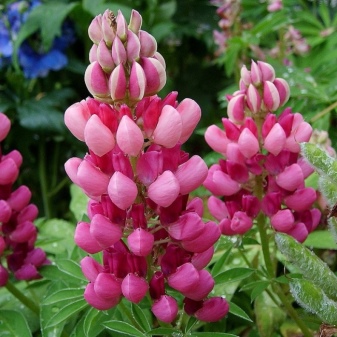
Review of popular varieties
It is assumed that the place of origin of the multi-leaved lupine is North America. Accordingly, its varieties can feel quite comfortable even in the cold regions of our country. Some of them can be found even in wild taiga forests.


Popular varieties include the following:
"Schloss Frau" has inflorescences of a pleasant pink hue;
"May Castle" has bright red flowers, looks very advantageous in various compositions, attracts attention;
"Castellan" - a variety that has blue inflorescences with a purple tint;
"Abendglut" is a plant with dark red flowers;
"Albus" - lupine with snow-white inflorescences;
"Ze Chaitelein" - a variety that is distinguished by pale pink flowers with a white sail, looks especially bright and advantageous in partial shade;
the Aprikot variety pleases gardeners with eye-catching orange inflorescences;
"Neue Spillarten" are distinguished by interesting pinkish-orange inflorescences;
"Princess Juliana" has pink and white flowers, looks very delicate;
Rubinkönig is a variety with ruby-purple inflorescences.
Lupine varieties
Academic 1. Of the varieties of yellow lupine, the most early ripening (growing season - 90-120 days), has a high seed productivity (up to 2.5 t / ha), the yield of green mass is 50 tons per ha, is affected by fusarium, is resistant to viral overgrowth.
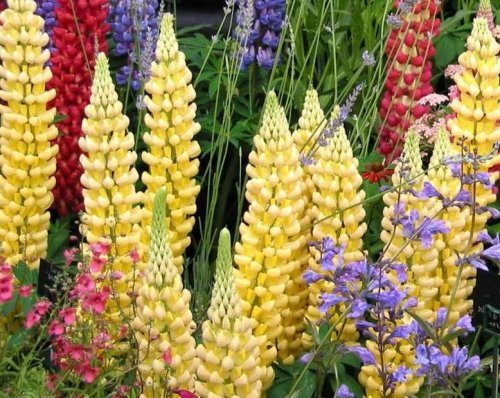
In the photo there is yellow lupine
Narochansky. Close to Akademicheskiy 1 in productivity and early maturity, resistant to fusarium, infected with viruses.
BSKHA 382 and Kastrychnik. New varieties of yellow lupine, resistant to fusarium during cultivation, are replacing the varieties Narochansky and Akademichesky 1.
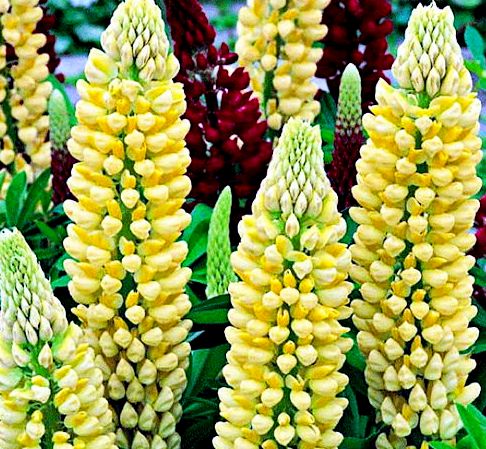
Photo lupine yellow multifoliate variety Chandelier
Nemchinovsky 846. Early ripening - 95 days. A variety of narrow-leaved lupine. Unlike varieties of yellow lupine, when grown, it gives more seeds (up to 35 c / ha), but the green mass is coarser, the content of alkaloids is higher. With proper care, lupine of this variety is resistant to fusarium and viruses.

Photo of narrow-leaved lupine
Where to plant?
The plant is quite unpretentious, but in advance you should choose a place for planting it. This must be done taking into account the variety, since the preferences of lupines may be different. However, there are some general guidelines that all gardeners should adhere to.
Location and lighting play a role. Most often, lupins are planted in spring, from April to the first ten days of May, or in autumn. You need to choose a sunny area or partial shade, the shrub will feel equally good in each case. However, a strong shade should be avoided, otherwise the plant will simply not take root. If the procedure is planned to be carried out in the spring, the place is prepared even before the first frost begins.
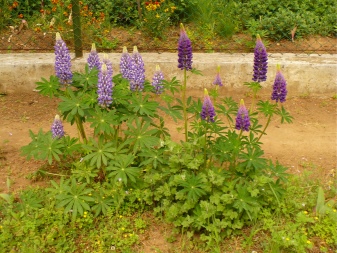
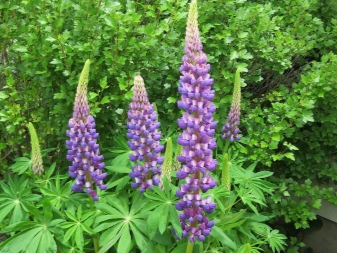
Plants feel best on slightly alkaline or slightly acidic soil. Ideally, it should be sandy or loamy. Lime or dolomite flour must be added to the soil with a high acidity level. If this is not done, the lupins will be very weak, and the leaves will turn pale. A similar procedure is performed once every 5 years. Peat is added to alkaline soils, its presence protects the shrub from leaf chlorosis.

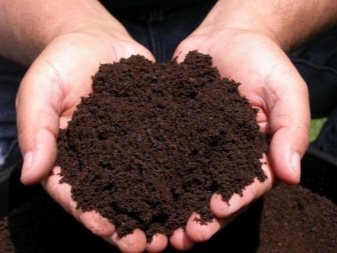
Biological features of lupine
On sandy, sandy loam and light loamy soils, fodder lupines are an important source of high-protein fodder and a reliable means of improving soil fertility. The deep (up to 3 meters or more) root system of lupine uses water from deep-lying soil layers and hard-to-reach nutrients for other crops.
Lupine plants in symbiosis with nodule bacteria have nitrogen-fixing properties. Lupine seeds contain 30-40% protein, green mass 15-22% protein, 13-15% sugar, 3-4% fat.
The high feed value of lupine is determined not only by the protein content, but also by its biological value due to the increased content of essential amino acids.
With a yield of four hundred centners per hectare of greenery, lupine, when grown, accumulates up to 85 centners of crop and fodder residues per hectare, containing up to one and a half centners of nitrogen, 32 kg of potassium, 8 kg of phosphorus, which determines its importance in crop rotation.
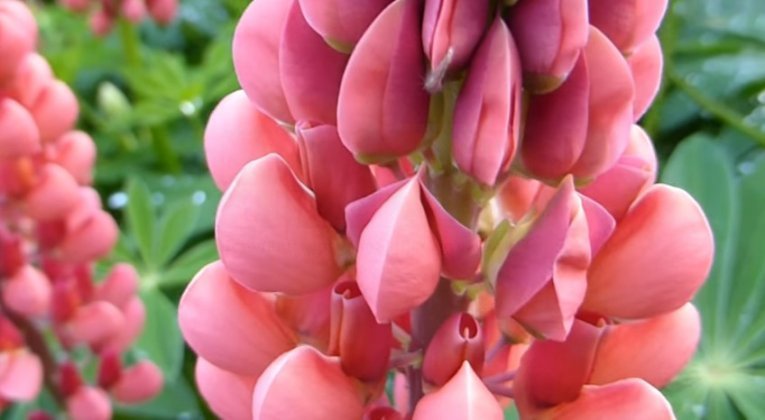
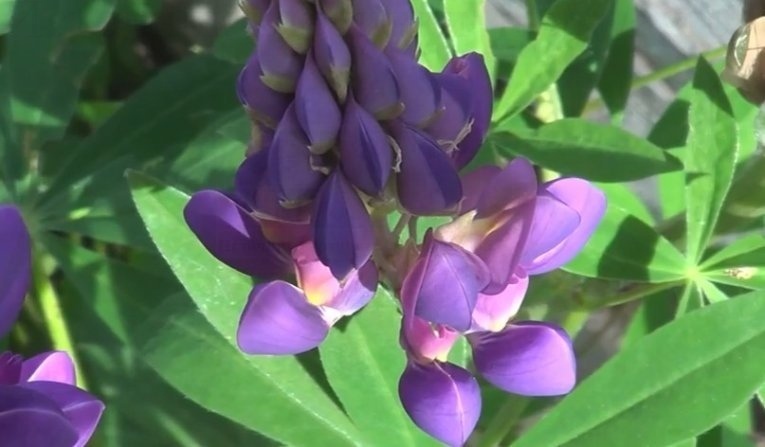
In the photo, lupine flowers
WHAT IS LUPINE CARE
All that lupine needs is weeding and loosening.Loosening is a mandatory procedure that is necessary for full access of oxygen to the roots.
There is also such a feature in lupins: after some time, the plants begin to "bulge" out of the ground, as it were. During this period, they require compulsory hilling in order to cover the exposed root collar with soil. This maneuver will then stimulate the development of lateral roots, and this, in turn, will prolong the decorative effect of the plant.
As for wintering, I do not cover lupins for the winter, there have been no problems with frost so far.
Be sure to try growing this beautiful plant! You will not regret it. And in my plans - to plant two-color varieties of lupins.
It was Russell's lupines that inspired me especially with their power and beauty. They were bred in England by an amateur breeder J. Russell on the basis of varifolia lupine. Its hybrids are unique in that they have large, often even giant inflorescences - very dense, stuffed, with large, catchy flowers. The length of the brush can reach 45 cm. Stately, tall (about TOO cm in height) - Russell's lupines are visible from afar
Their mesmerizing beauty always attracts attention, it is difficult to take your eyes off them. I fell in love with them at first sight!

Lupine varieties - photo
Description of the lupine plant
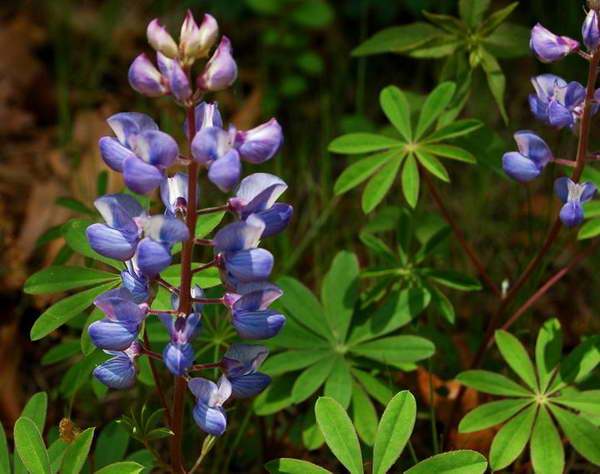
Lupine planting and care in the open field How to grow lupine
All lupins have a taproot system that can grow into the ground up to 2 meters. Like all legumes, the roots have bulges to absorb nutrients and nitrogen to enrich the soil. The stems can be both herbaceous and more dense, the branches spread along the ground, erect or protruding.
The leaves have long petioles, are arranged alternately on the branches, have a finger-like complex structure. The inflorescence is an apical raceme of whorled, semi-whorled, or alternate type. Depending on the species, the brush can be small or even gigantic, about 1 meter. The flowers are also painted in different colors, depending on the species - white, red, pink, yellow, purple, cream, purple, etc.
At the end of flowering, lupine throws out seeds that can differ in color, shape and size. So the beans of the Mediterranean varieties of lupine are slightly larger than their western counterparts. When the beans are ripe, they crack, scattering seeds everywhere in the form of very small grains. Due to its easy distribution, lupins are grown both in flower beds and as a green manure (that is, to fertilize the earth with rotted leaves and stems). Therefore, even fodder lupines can be found on the farm.
Types and varieties of lupins with photos and descriptions
First of all, it is necessary to study the plant species that are actively growing in the wild.
Lupine angustifolia or blue Lupinus angustifolius
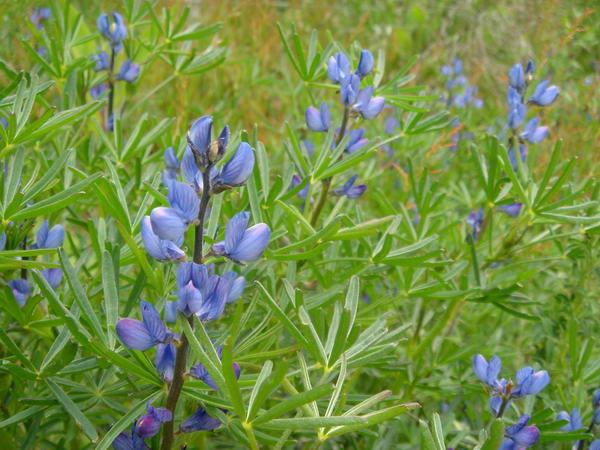
Lupine narrow-leaved or blue siderat photo
Herbaceous plant growing up to 150 cm in height. It has a slightly pubescent stem of an erect type, palmate-separate leaves, the lower part of which is also pubescent. The flowers have a white, pinkish or purple hue, which is why the species was called blue. It is grown as an annual green manure.
Lupine multifoliate Lupinus polyphyllus

Lupine multifoliate Lupinus polyphyllus photo
The plant is native to the Northwest of North America. It has a high degree of winter hardiness, which means it is perfect for our latitudes. The height of an adult organism is 80-120 cm. In this case, the straight stem is almost naked, and those leaves that exist have long petioles and finger leaves pubescent below. The inflorescences are 30-35 cm long and are formed by a large number of blue flowers. Flowering time is all June. If you cut off wilted flowers, you can wait for re-flowering in August-September.
Lupine yellow Lupinus luteus

Lupine yellow Lupinus luteus photo
An annual plant, the stem of which is also weakly covered with leaves and heavily pubescent. The leaves are arranged on long cuttings, the lower part of them is pubescent. They consist of 5-9 blades. The plant blooms in yellow and has a strong aroma similar to mignonette.The shape of the inflorescence is a whorled brush.
White lupine Lupinus albus

White lupine Lupinus albus photo
Plant height is up to 150 cm. The stem is straight, branches only at the top. The leaves are also palmate, covered with villi below, and smooth above. The flowers are white, light pink or light blue, do not smell, grow in a spiral.
These are the main species of this plant, but perennial, small-leaved, nutkan, dwarf, tree, hybrid, etc. lupine can also be cultivated.
Lupine hybrid
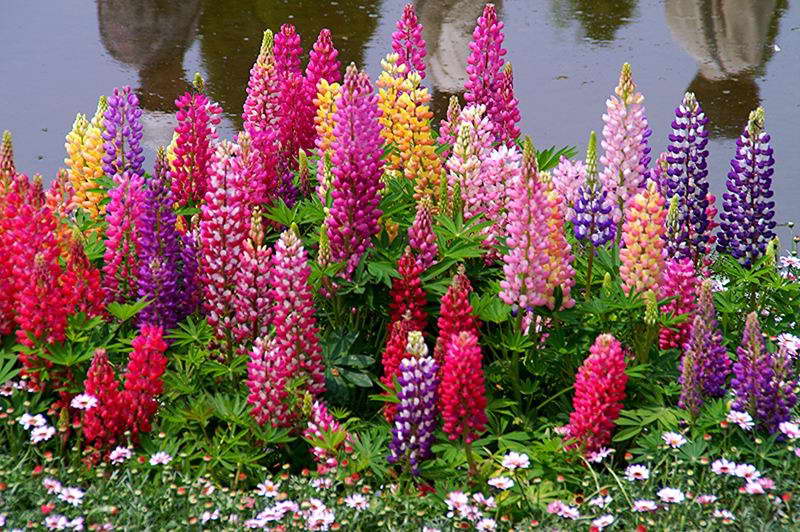
Lupine in the flowerbed photo Lupine flower planting and care
If we talk about hybrid varieties, the following are popular:
- Princess Juliana - plant height 110 cm, blooms with white-pink flowers, inflorescence size - 40 cm, flowering time - 40 days in June-July;
- Apricot - plant height 90 cm, has orange flowers, collected in 40-centimeter inflorescences. It blooms for 30 days in June-July.
Breeder Russell pioneered the development of lupine varieties, but they are still the finest of the modern varieties.
- This is a white variety Burg Fraulin,
- red-brick Mine Schloss,
- undersized Minaret, Splendid and other hybrids.
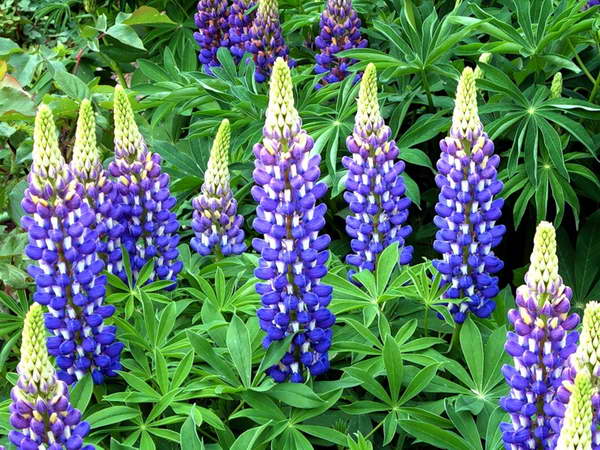
Lupine plant growing and care Blue lupine in the photo
Planting lupine seedlings in open ground
How to plant lupines? For a flower, choose a soil close to neutral (slightly alkaline or slightly acidic), loamy or sandy loam, in a well-sunlit area. To prepare the site in the fall for planting in the spring, too acidic soil is treated with lime or dolomite flour, adding 5 kg of substance per square meter. This will be enough for 4 years. If the soil is very alkaline, it is treated with peat, pouring the same amount as lime in the previous option. How to plant lupite in the ground, we look at the video:
When the seedlings have grown and matured in spring, they are planted in ready and open soil at a distance of about 30-50 cm from each other.
It is advisable to add humus to each hole.
It is better to plant by transshipment. To do this, water the seedlings well and let stand for about an hour.
The earthen ball can be carefully pulled out of the container and immediately placed in the hole without violating the integrity of the roots. Sprinkle with earth, lightly press with your palms.
Water it abundantly so that the moisture is well absorbed and soaked the earth in the hole.
Lupins will bloom this year, but the bushes will still be small. It is advisable to cut off the faded inflorescences so that the bush does not waste energy on the production of seeds. So the plant will take root better in order to please with flowering in full force next season.
Lupine for green fertilizer
For green fertilizer, annual lupine is cultivated in the country as fodder and bitter (alkaloid) varieties of narrow-leaved (blue) and yellow lupins. They accumulate the greatest vegetative mass during the period of filling seeds in beans. Of the varieties of bitter narrow-leaved lupine in the Non-Chernozem zone, Benyakovsky 484 and others are widespread. They are grown for green fertilization in the same way as for fodder seeds of copta with continuous row sowing.
Figure 1. Lupine annual
Perennial lupine is grown for green fertilization on poorly cultivated light, medium and heavy sod-podzolic soils. Due to its cold resistance, it is spread to the northern borders of agriculture. In the first year of life, plants in a clean and undercover sowing form only a basal rosette with leaves, and in the second and subsequent years of life, it bears fruit, accumulating a large green mass.
It is sown under spring or winter grain crops, the seeding rate is 40-50 kg / ha. Seeds are scarified before spring sowing, the embedding is small. Perennial lupine can grow in one field for 4-5 years or more. Possible culture in the output fields of crop rotations. In such cases, the mowed mass is transported to the fertilized fields. The ash mass contains relatively little crude fiber and quickly decays. For plowing, the above-ground vegetative mass is crushed along and across by disc harrows.
Figure 2. Perennial lupine
Perennial lupine seeds ripen in July.Due to the uneven maturation of plants and individual fruits, desiccation or separate harvesting is used to dry the stem. They are directly harvested at a high cut, the remaining mass is plowed into fertilizers.
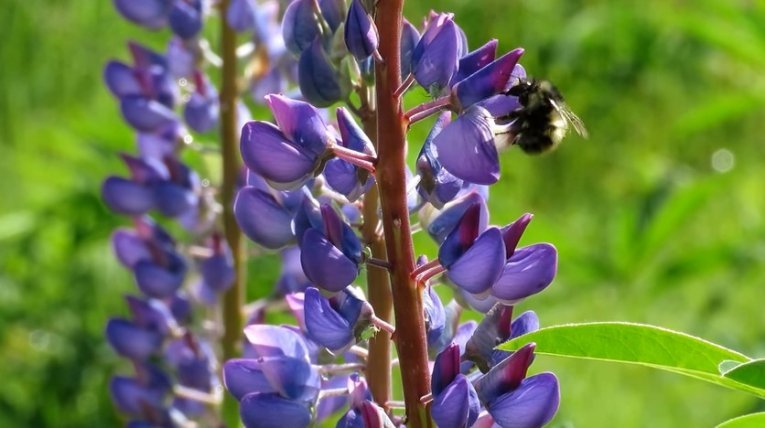
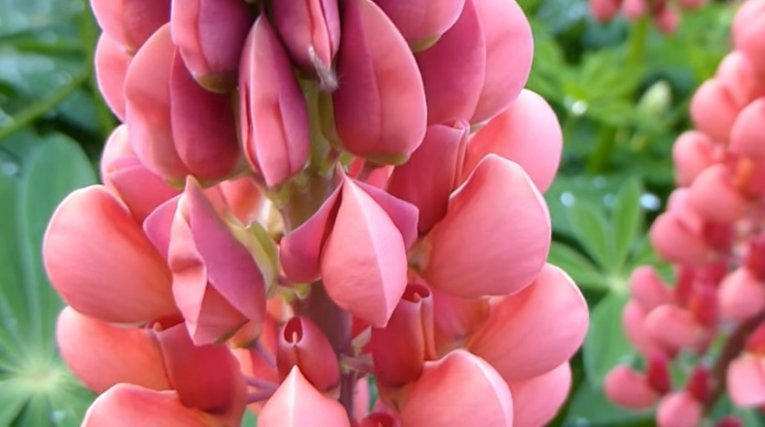
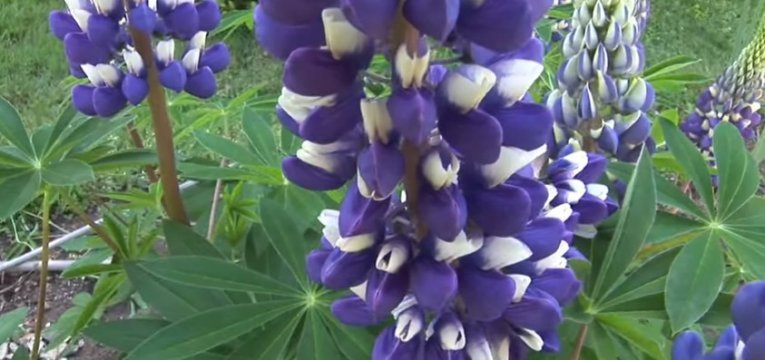
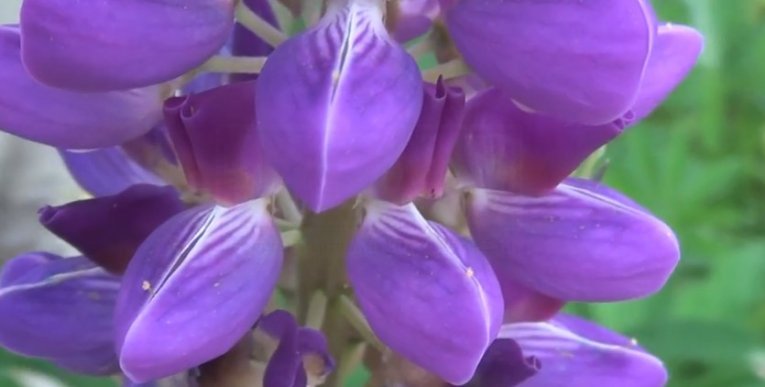
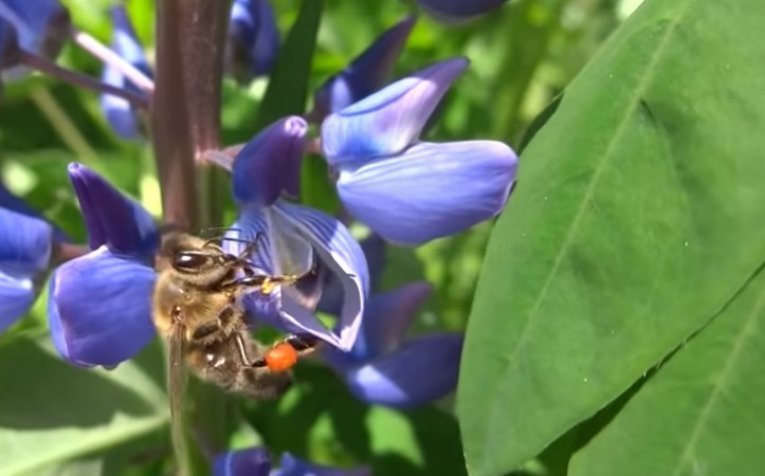
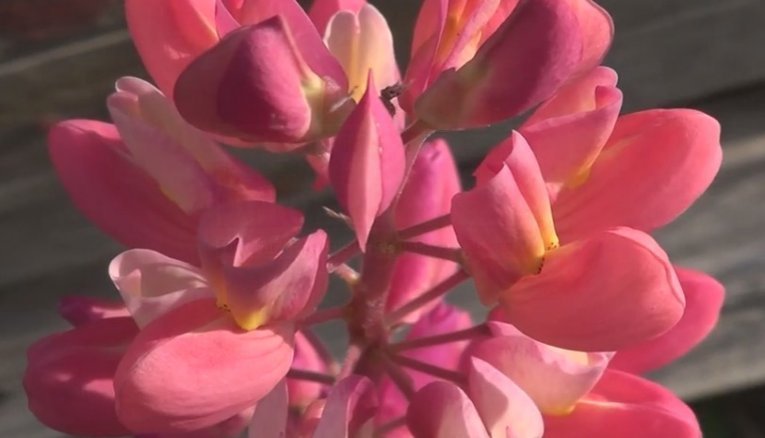
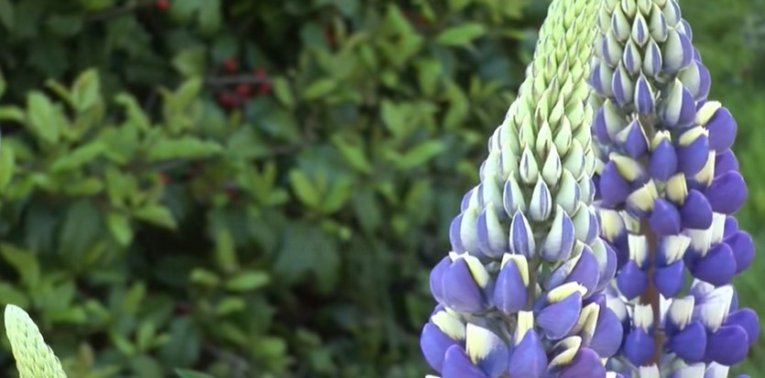
Photo of lupine flowers
Sowing lupine
For seed purposes, lupine is sown in the early stages in a continuous or wide-row method, and when grown for silage and green fodder - in a continuous method with the onset of stable warming. In such planting conditions, shoots appear quickly and a higher green mass of lupine accumulates.
With continuous row sowing, the seeding rate is 1.2 million / ha of grains, with (wide-row or belt sowing with a row spacing of 45-60 centimeters 0.6-0.7 million / ha). It is better to use vegetable seeders SO-4.2 and SON-2.8, which have disc coulters with flanges, for wide-row sowing of lupine. You can use grain seeders SZ-3.6 and SPZ-3.6.
Lupine planting patterns:
- belt - tractor MTZ-80 (track 1400 mm), seeder SON-2.8 (8 working openers, row spacing 50 and 20 cm between lines);
- wide-row - tractor MTZ-80 (track 1600 mm, rear wheels are basic), seeder SZ-3.6.
- when sowing with a two-line (band) method, the working coulters are 1-2-5-6-10-11-14-15-19-20-23-24. In this case, the width of the capture will be three aisles of 45 cm, two of 60 cm, the distance between the rows of lupine in the tape is 15 centimeters.
On bonded soils, the depth of planting seeds is about 3 centimeters, on light soils 3-4 centimeters. With a moisture deficit after sowing, the soil is rolled up.
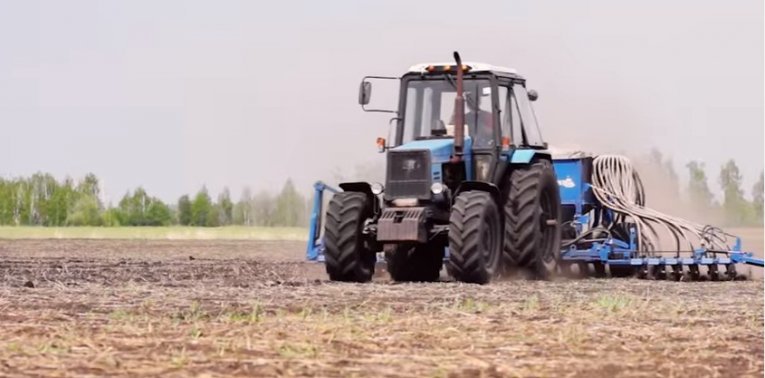
Photo of sowing lupine with the S-6PM seeder
Lupine crop care and harvesting for seeds
4 days after planting, the soil is harrowed across the sowing with light tooth harrows. On cohesive soils, if necessary, it is possible to harrow along lupine shoots in the phase of four to five leaves at a speed of movement of the unit no more than five km / h (the harrows have a bevel of the tooth forward). To control weeds when caring for lupine for harrowing, prometrine is used (this operation is carried out before the emergence of shoots).
In wide-row crops, up to 3 inter-row treatments are carried out: 1st - in the phase of 4-5 leaves, 2nd - at a plant height of 12-15 centimeters, 3rd - 8-10 days after the second. Razors or chisels are set at a depth of six centimeters and placed 20-30 centimeters one after the other to prevent clogging and filling of lupine shoots.
The cultivated lupine gives the highest yield of green mass in the phase of shiny beans. For mowing the grown lupine, forage harvesters KKS-100 and E-281 are used.
To accelerate maturation, desiccation is carried out - in the yellowing phase - the yellow root of the embryo of the seed is used magnesium chlorate (at the rate of 10-13 kg / ha). For the passage of the sprayers, swaths are made every 40-50 meters, removing the lupine for the green mass.
To reduce losses, the reels of the threshing apparatus are regulated and threshing is carried out at soft modes (700-950 rpm). It is advisable to use the PLZ-5 device for the SK-5 combine for threshing.
After threshing, the heap of lupine has a high humidity, therefore, immediate preliminary cleaning is required at ORP-20A, OVS-25. When the moisture content of lupine seeds is above 16%, they are dried, preferably on floor dryers.

Photo of lupine seeds
Lupine seeds are dried in bunkers of active ventilation, for which electric heaters are removed and heat generators are used to heat the air.


